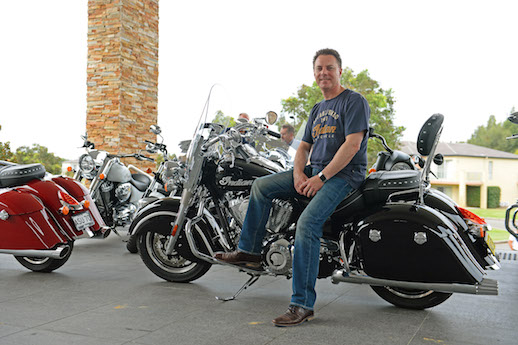With the addition of the Indian Springfield hard bagger, the range is complete and there won’t be any new platforms or a learner bike, says Peter Alexander managing director of Polaris Australia and New Zealand.
In a long and wide-ranging interview with the boss of Polaris which owns and operates Indian and Victory motorcycles, Peter says there are no new engine or frame platforms to come from Indian.
“Springfield completes the range,” he says. “No doubt there will always be new products, but no new platforms, only slight variations.”
While that doesn’t mean there will never be any new Indian platforms, it shows that nothing is coming in the next five years as executives are usually only made aware of product development in that timeframe.
Peter also gives a firm “no” to the question about a possible learner-approved sub-650cc motorcycle.
“Not until there is another big market somewhere in the world for sub-650cc bikes,” he says.
“The current engine (983cc Scout Sixty) can not be dumbed down to LAMS levels.
“We know that would be good as in Victoria you have to be on a LAMS bike for three years and we could sell a lot, but it won’t happen.”
Peter has been with Polaris since 2004 and has seen an enormous amount of growth in that time, including the purchase of the Indian Motorcycle brand.

“Indian has already grown to the stage where aftermarket companies are now offering accessories for our bikes,” he says.
“Scout has changed the game for us. We did well at the start with the Chief range but to go to that next level bike so soon was great.
“We had 300 customers put $1000 deposits down on the Scout sight unseen and price unknown. Indian as a brand never ceases to surprise me.”
Peter says both Indian and Victory had stock problems last year but they are largely solved now with short waiting times unless the customer wants a specific colour not in stock.
“It’s difficult to get the mix of colours right as we order six months in advance,” he says. “Right now there is a surplus of red Scouts.
“We’re also doing a few special edition bikes with white wall tyres, special paint and spoked wheels because more and more Scouts we sell are being customised.”
He says the Scout still outsells the Scout Sixty at about 10 to one, despite the very attractive $2000 discount on the smaller-capacity bike.
The Scout debuted at $17,995 but is now $19,9995, thanks to the decrease in the Australian dollar and the arrival of the Scout Sixty at $17,995. The $2000 discount brought it back to an attractive $15,995, ride away.
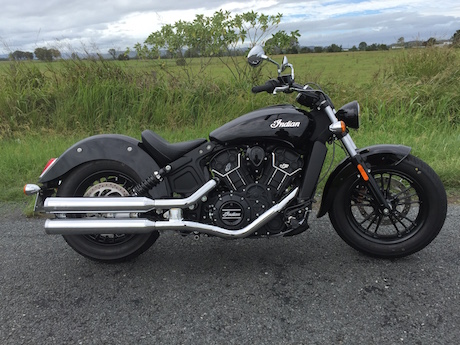
“We’re under great price pressure because of the dollar value and we can’t be changing prices,” he says.
“We may not have a LAMS bike but we do have an entry level price point into the brand. We thought the Sixty price reduction would make it fly off the shelf but the Scout is still the top seller.”
Every new owner receives membership to the Indian Motorcycle Riders’s Group and two-year roadside assist.
Peter says their challenge now is to get those members to renew their membership when it expires.
He hints that they are working on “something big” to retain membership and suggests we “watch this space”.
“Renewal of membership is very important so we have to do something big, but it’s hard to get critical mass to do a big event so, at the moment, we are just doing store rides,” he says.
Polaris is also working on mapping their vehicles’ telematics so they can alert owners when their service is due.
“The future will be vehicles that are connected to the grid for the benefit of riders,” Peter says. “It’s more important for safety when in isolated areas such as ATVs and snowmobiles but also bikes for servicing.”
He says another pivotal part of their growth is expanding the dealer network with their largest store opening in Perth in the third quarter.
“It will be a new design – the first designed with both Victory and Indian in mind – and right next door to a Harley dealership for the first time. We’re really looking forward to that.”
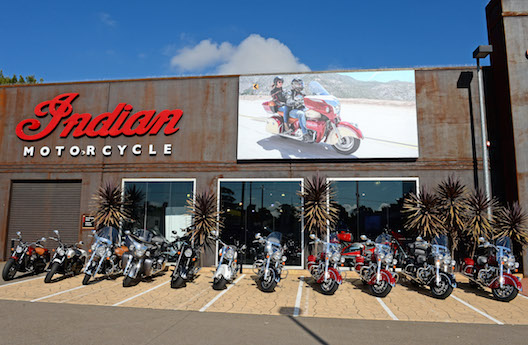
By the end of this year, Indian and Victory will have Polaris-owned stores in Sydney, Melbourne, Brisbane and Perth, plus independent dealers in Canberra, Darwin, Mackay, Newcastle and a new one in Tasmania.
“Many dealers have waited to be a part of us but we set a very high standard,” Peter says.
“Owning our own stores is a real advantage, though, because we are closer to the customer.
“I go to the stores all the time and people can talk directly to the MD of the company. That creates some expectations. There is simply nowhere for us to hide from the customer.”
He also wants to set up more pop-up stores in Westfield shopping centres to sell clothing and merchandise and display their motorcycles.
The company sets up temporary stores or mall displays when tenants vacate in an arrangement with Westfield.
A recent pop-up store in the Doncaster shopping centre resulted in 93 test rides, Peter says.
“They get 100,000 customers going through these centres a day,” he says.
“People don’t just stumble into a bike shop, but they would if we are in a shopping centre.
“A lot of people who are buying apparel don’t even ride. We get a lot of Asian tourists; some people buy up to three leather jackets at a time.
“It’s just a great brand that people want to wear.”
However, he says they won’t follow Harley’s lead setting up retail merchandise stores in airports. He says that’s too expensive in rent and staff as they rarely close.
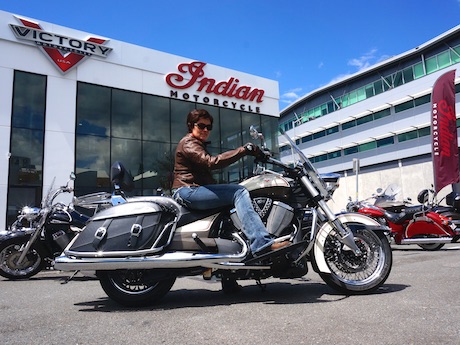
Peter describes their dealer and retailing network as a hub-and-spoke strategy with the Polaris-owned and independent dealers as the hub and the spokes consisting of stores, agents who sell on their behalf and service-only dealers.
“We are very flexible,” he says.
In five years, Peter believes Polaris will sell 10,000 units a year, up from about 6210 last year (5095 Polars, 734 indian and 381 Victory).
He sees ATVs making huge inroads when regulators mandate rollover protection as Polaris has 23 models already with cages.
“Polaris pays the bills,” he says.
But he also sees Indian continuing to grow and Victory turning around its recent slump.
“We are the only market where Victory didn’t suffer cannibalisation at the launch of Indian, but sales have been down in last six months because of a lack of new product,” Peter says.
“We’re hoping Octane will change that and bring in younger riders and females.
“The good thing about Victory is it’s not encumbered by history like Indian. It’s not constrained so they can do anything they want.
“Look at the Vision. it was one of the most bold statements by a new motorcycle manufacturer. We have a cutting edge look. We have electric bikes, we’re racing at Pikes Peak again.
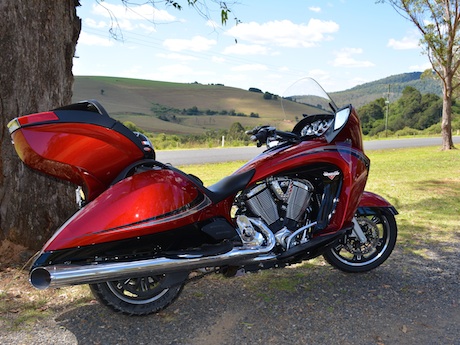
“Victory will continue to be a more aggressive and powerful brand and non-traditional.”
He says the key to growing sales is having a large stock of demos and pushing customers to test their bikes.
“Five years ago you couldn’t get a test ride on a Harley in Melbourne and when you did it was around the block,” he says.
“Still no one in the industry goes close to our offer of a free tank of fuel and weekend accommodation while you test our bikes. It’s been great for the industry and we will continue to do that.”
Peter is a staunch believer that the motorcycle industry has to grow beyond being a “cottage industry” and he is calling on the Federal Chamber of Automotive Industries to audit motorcycle sales figures in the same professional manner as cars.
“It’s mind-boggling that so much is claimed and so much importance is based on the sales figures when all you need do is supply unique VIN numbers, not registrations.
“I could list the bikes on sale in New Zealand and suddenly I’m king for a day. But what does that get you?
“There are companies that are making false claims on market share based on these figures.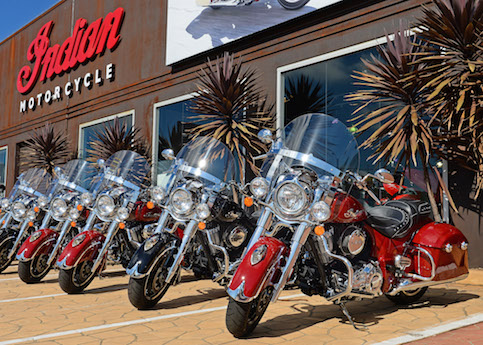
“The motorcycle industry has to stop being a cottage industry and act like the car industry which has accountability because they have audited figures.”
He admits that a big problem is the number of unregistered dirt bikes sold, a problem that does not affect the car industry.
His background in Subaru has served him well and possibly contributed to his different approach to the motorcycle industry.
‘“I believe there are a lot of synergies and similarities between Polaris and Subaru where I installed company-owned dealerships: they are both small brands with engineering integrity, unique features and a challenger brand,” he says.
“Fuji was also one of the largest suppliers of components and engines for Polaris for more than 50 years.
“Even the Subaru constellation in their logo is the same as the Polaris star.
“When they went to a blue background, I bought a heap of signs in silver at half price to use with Polaris,” Peter says.


